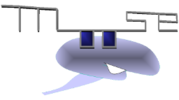#########################################################################
## This program is part of 'MOOSE', the
## Messaging Object Oriented Simulation Environment.
## Copyright (C) 2014 Upinder S. Bhalla. and NCBS
## It is made available under the terms of the
## GNU Lesser General Public License version 2.1
## See the file COPYING.LIB for the full notice.
#########################################################################
import sys
sys.path.append('../../python')
import math
import pylab
import numpy
import matplotlib.pyplot as plt
import moose
import os
import signal
PID = os.getpid()
def doNothing( *args ):
pass
signal.signal( signal.SIGUSR1, doNothing )
[docs]def makeModel():
"""
This example illustrates how to set up a diffusion/transport model with
a simple reaction-diffusion system in a tapering cylinder:
| Molecule **a** diffuses with diffConst of 10e-12 m^2/s.
| Molecule **b** diffuses with diffConst of 5e-12 m^2/s.
| Molecule **b** also undergoes motor transport with a rate of 10e-6 m/s
| Thus it 'piles up' at the end of the cylinder.
| Molecule **c** does not move: diffConst = 0.0
| Molecule **d** does not move: diffConst = 10.0e-12 but it is buffered.
| Because it is buffered, it is treated as non-diffusing.
All molecules other than **d** start out only in the leftmost (first)
voxel, with a concentration of 1 mM. **d** is present throughout
at 0.2 mM, except in the last voxel, where it is at 1.0 mM.
The cylinder has a starting radius of 2 microns, and end radius of
1 micron. So when the molecule undergoing motor transport gets to the
narrower end, its concentration goes up.
There is a little reaction in all compartments: ``b + d <===> c``
As there is a high concentration of **d** in the last compartment,
when the molecule **b** reaches the end of the cylinder, the reaction
produces lots of **c**.
Note that molecule **a** does not participate in this reaction.
The concentrations of all molecules are displayed in an animation.
"""
# create container for model
r0 = 2e-6 # m
r1 = 1e-6 # m
num = 100
diffLength = 1e-6 # m
len = num * diffLength # m
diffConst = 10e-12 # m^2/sec
motorRate = 10e-6 # m/sec
concA = 1 # millimolar
model = moose.Neutral( 'model' )
compartment = moose.CylMesh( '/model/compartment' )
compartment.r0 = r0
compartment.r1 = r1
compartment.x0 = 0
compartment.x1 = len
compartment.diffLength = diffLength
assert( compartment.numDiffCompts == num )
# create molecules and reactions
a = moose.Pool( '/model/compartment/a' )
b = moose.Pool( '/model/compartment/b' )
c = moose.Pool( '/model/compartment/c' )
d = moose.BufPool( '/model/compartment/d' )
r1 = moose.Reac( '/model/compartment/r1' )
moose.connect( r1, 'sub', b, 'reac' )
moose.connect( r1, 'sub', d, 'reac' )
moose.connect( r1, 'prd', c, 'reac' )
r1.Kf = 1.0 # 1/(mM.sec)
r1.Kb = 1.0 # 1/sec
# Assign parameters
a.diffConst = diffConst
b.diffConst = diffConst / 2.0
b.motorConst = motorRate
c.diffConst = 0
d.diffConst = diffConst
# Make solvers
ksolve = moose.Ksolve( '/model/compartment/ksolve' )
dsolve = moose.Dsolve( '/model/compartment/dsolve' )
stoich = moose.Stoich( '/model/compartment/stoich' )
stoich.compartment = compartment
stoich.ksolve = ksolve
stoich.dsolve = dsolve
os.kill( PID, signal.SIGUSR1 )
stoich.path = "/model/compartment/##"
print dsolve.numPools
assert( dsolve.numPools == 3 )
a.vec[0].concInit = concA
b.vec[0].concInit = concA
c.vec[0].concInit = concA
d.vec.concInit = concA / 5.0
d.vec[num-1].concInit = concA
def makePlots():
plt.ion()
fig = plt.figure( figsize=(12,6) )
dynamic = fig.add_subplot( 111 )
a = moose.vec( '/model/compartment/a' )
b = moose.vec( '/model/compartment/b' )
c = moose.vec( '/model/compartment/c' )
d = moose.vec( '/model/compartment/d' )
pos = numpy.arange( 0, a.conc.size, 1 )
aline, = dynamic.plot( pos, a.conc, label='a' )
bline, = dynamic.plot( pos, b.conc, label='b' )
cline, = dynamic.plot( pos, c.conc, label='c' )
dline, = dynamic.plot( pos, d.conc, label='d' )
plt.ylabel( 'Conc (mM)' )
plt.xlabel( 'Cylinder voxel #' )
plt.legend()
timelabel = plt.text( 10, 0.8, 'time = 0.0' )
fig.canvas.draw()
return( fig, dynamic, timelabel, aline, bline, cline, dline )
def updatePlots( plotlist, time ):
a = moose.vec( '/model/compartment/a' )
b = moose.vec( '/model/compartment/b' )
c = moose.vec( '/model/compartment/c' )
d = moose.vec( '/model/compartment/d' )
plotlist[2].set_text( "time = %g" % time )
plotlist[3].set_ydata( a.conc )
plotlist[4].set_ydata( b.conc )
plotlist[5].set_ydata( c.conc )
plotlist[6].set_ydata( d.conc )
plotlist[0].canvas.draw()
def main():
runtime = 20.0
diffdt = 0.005
plotdt = 0.1
makeModel()
# Set up clocks. The dsolver to know before assigning stoich
moose.setClock( 10, diffdt ) # 10 is the standard clock for Dsolve.
moose.setClock( 16, plotdt ) # 16 is the standard clock for Ksolve.
a = moose.element( '/model/compartment/a' )
b = moose.element( '/model/compartment/b' )
c = moose.element( '/model/compartment/c' )
d = moose.element( '/model/compartment/d' )
moose.reinit()
atot = sum( a.vec.n )
btot = sum( b.vec.n )
ctot = sum( c.vec.n )
dtot = sum( d.vec.n )
plotlist = makePlots()
for t in numpy.arange( 0, runtime, plotdt ):
moose.start( plotdt )
updatePlots( plotlist, t )
# moose.start( runtime ) # Run the model
atot2 = sum( a.vec.n )
btot2 = sum( b.vec.n )
ctot2 = sum( c.vec.n )
dtot2 = sum( d.vec.n )
print 'Ratio of initial to final total numbers of of a, b, c, d = '
print atot2/atot, btot2/btot, ctot2/ctot, dtot2/dtot
print 'Initial to final (b+c)=', (btot2 + ctot2) / (btot + ctot )
print "\nHit 'enter' to exit"
raw_input()
quit()
# Run the 'main' if this script is executed standalone.
if __name__ == '__main__':
main()
